Guide for fence security and proofing
Fence spikes can deter any creatures that are trying to make their way into your space through positioned fences. The fence spikes are usually designed in an end-to-end manner and are densely packed so no delicate paws or creatures can get through.
They are designed to cause discomfort when any creature or intruder tries to get into the space.
Furthermore, spikes can also be used as ones that can deter birds from sitting on them and making the fence filthy.
Moreover, fence spikes are also quite easy to install. Besides cats and other animals, fence spikes also help to keep intruders such as burglars outside.
For further protection, some of the fence spikes are also made of weather-resistant polypropylene.
Why use fence spikes?
There are multiple reasons why fence spikes may be used. One of the key reasons for its application is that they are simple to install, only requiring essential tools and techniques that don’t require digging or concrete.
As for the posts that are made of high-quality treated wood which are set in concrete may eventually decay. The likelihood of rot issues because fence post spikes are topped with a box that secures the base of the fence post just above the ground.
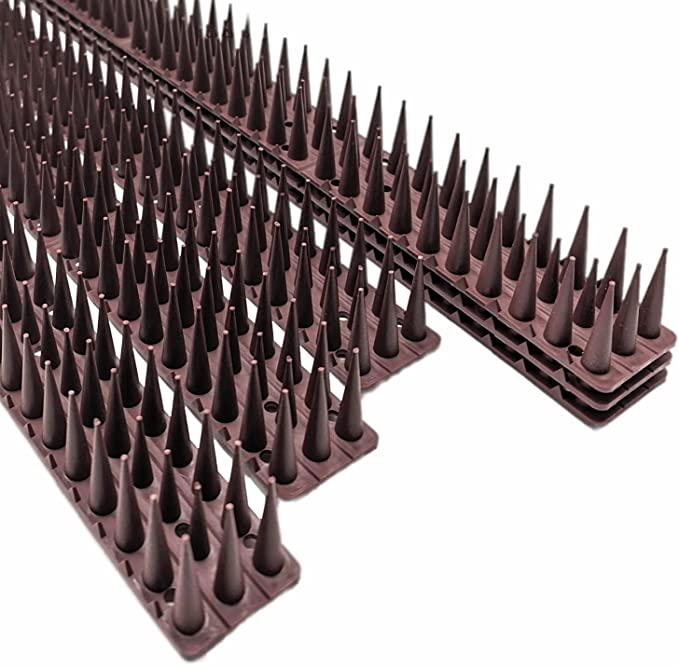
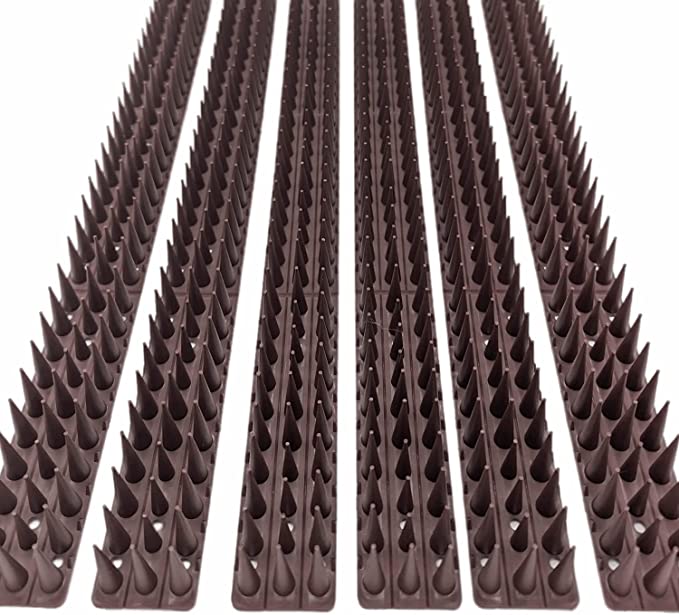
Moreover, if there is a need for replacement, fence posts can be removed easily and replaced if broken. Instead of having to dig up the broken post’s concrete foundation, all it requires is to remove it from the bottom.
Fence posts that are fixed through concrete are hardly moved out of their position This could be when the ground shifts due to the weather. Moreover, the major portion of your post shouldn’t be buried underground. This further reduces the cost of your posts.
Fence spikes can also be used for a variety of other garden tasks, such as setting up clothesline posts or putting in a free-standing decorative fence panel to create garden screening. Although the fence spikes can be ineffective when they are impacted by any lateral force.
How do they work?
Spikes usually function by gradually releasing nutrients into the soil. The natural and organic methods only allow for high-quality nutrients to be released into the ground.
This may also lead to increased resistance to diseases and pests making it a favourable aspect for places such as gardens.
Choose carefully because some spikes may also contain formaldehyde that may contaminate your plants or underground water.
Best practices for application
One of the most prominent best practices includes digging tiny holes for the spikes around the tree, shrub, or plant for the best absorption.
The spikes made for a particular plant type can be placed in the soft, moist soil near its drip line. Rain or condensation will fall where the spikes are placed and encourage root growth in the direction of the fertilizer.
Though using the spikes is easy, it is important to adhere to the guidelines before placing them on your plants.
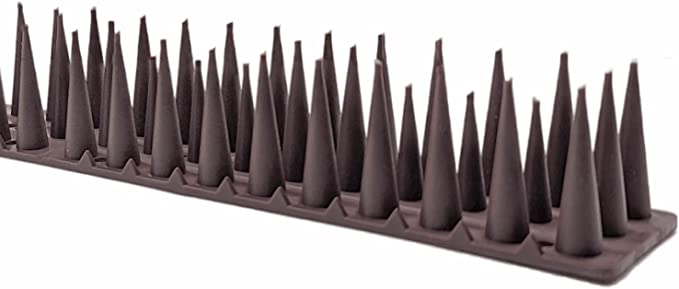
Best practices for application
The spikes made for a particular plant type can be placed in the soft, moist soil near its drip line. Rain or condensation will fall where the spikes are placed and encourage root growth in the direction of the fertilizer.
Though using the spikes is easy, it is important to adhere to the guidelines before placing them on your plants.
Types of anti-climb spikes
Below are the types of anti-climb spikes:
The Stegastrip
A Stegastrip is made of strong polypropylene material and has an aesthetic design element. Their spikes are fixed with strength on the top of the wall or fence. This makes it difficult for anyone to climb over them.
The Stegastrip can rotate which makes it impossible for a person or any other creature to climb on it. They are attached back to back in pairs and fitted to a Stegastrip post.
Rotating anti-climb spikes
A rotating barrier is created by rotating anti-climb spikes, which have a series of three-point vanes that can revolve easily around a central spindle.
This type of wall security spike is quite effective at deterring intruders because they don’t have any secure or stable places to maintain grip or secure footing.
Anti-climb spikes for fences are perfect for locations that demand high security. These places can be industrial yards, the grounds of banks, offices, retail stores, and private residences, or any locations where forced entry or vandalism may pose a serious threat.
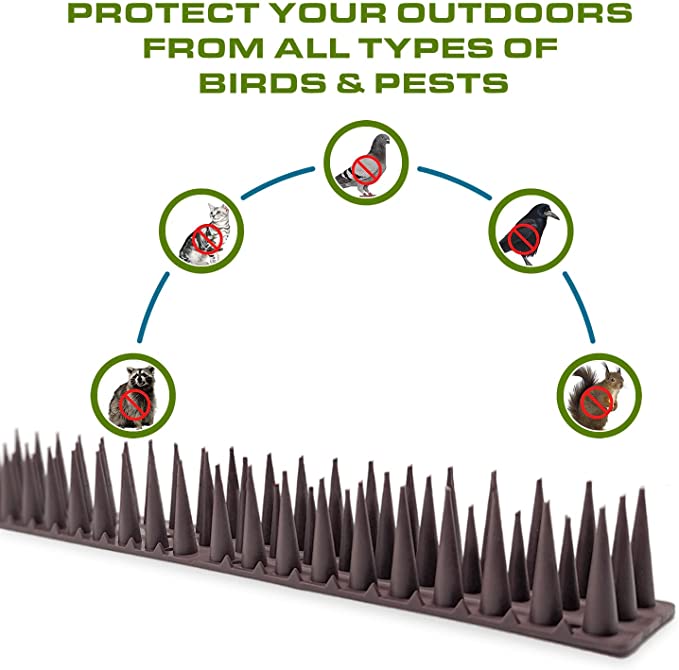
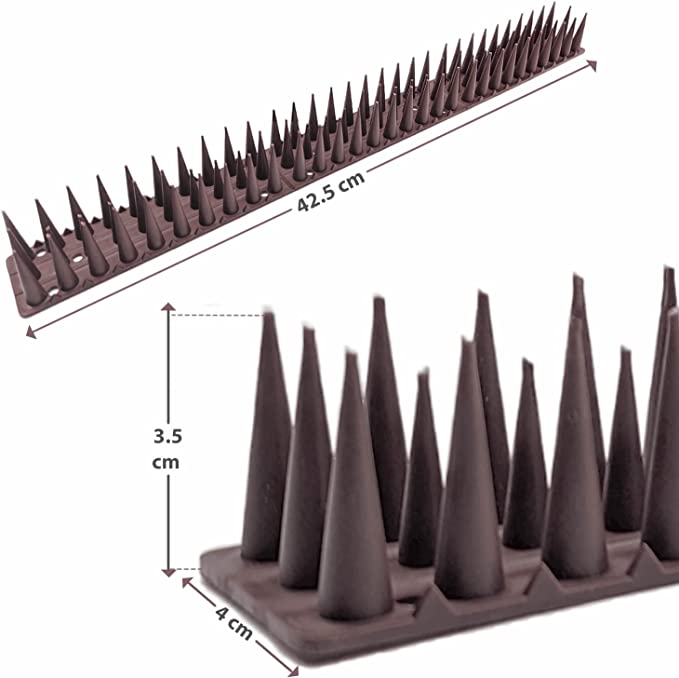
The Prikka Strip
A Prikka Strip is just as effective as the one mentioned above. They are also made of polypropylene and are intended to be quite uncomfortable for a creature or an intruder without hurting anyone. There are wider design variations available to fit neatly on top of a brick wall. A Prikka strip is available in multiple colours and can be fitted to any type of perimeter wall or fence.
Wall and Fence Spikes
Wall and fence spikes are an effective and affordable way to increase the security of your property. These metal spikes are designed to be installed on top of walls or fences to deter intruders from climbing over them. They come in various sizes and shapes, including flat, curved, and pointed options, and can be made from different materials such as stainless steel, plastic, and galvanized iron.
Not only do wall and fence spikes prevent people from climbing over, but they also act as a visual deterrent, sending a clear message that your property is well-protected. Additionally, they can be easily installed using screws or adhesive, and require very little maintenance.
Unlike other security measures like CCTV cameras or alarm systems, wall and fence spikes provide a physical barrier that is always present, making them a reliable and long-lasting solution. Overall, wall and fence spikes are a practical and effective way to enhance the security of your property while also being visually appealing.
Fences
The best and the most adopted strategy for a garden boundary is to build a fence. If you have the right tools, installing fencing is relatively simple and more affordable than building a wall.
Applying it to a brick wall simply involves measuring the length of the area and dividing it by the width of your panels to get the appropriate number of panels. Fence panels are typically 6 feet wide and come in a variety of heights.
Before you begin the process, ensure that the space is clean and that there are no obstructions. You may also want to see if there are any water pipes or cables in the ground where the post will be placed.
Installing a fence
If it’s a sloped ground, a different installation process may be used. This may lead to a steep fence. Each adjacent pair of panels’ higher panel should be the same height as the fence posts. You may also want to keep the panel level across the board. Gravel boards will be essential depending on the steepness of the slope. The gravel board may also be needed to be partially inserted into the ground.
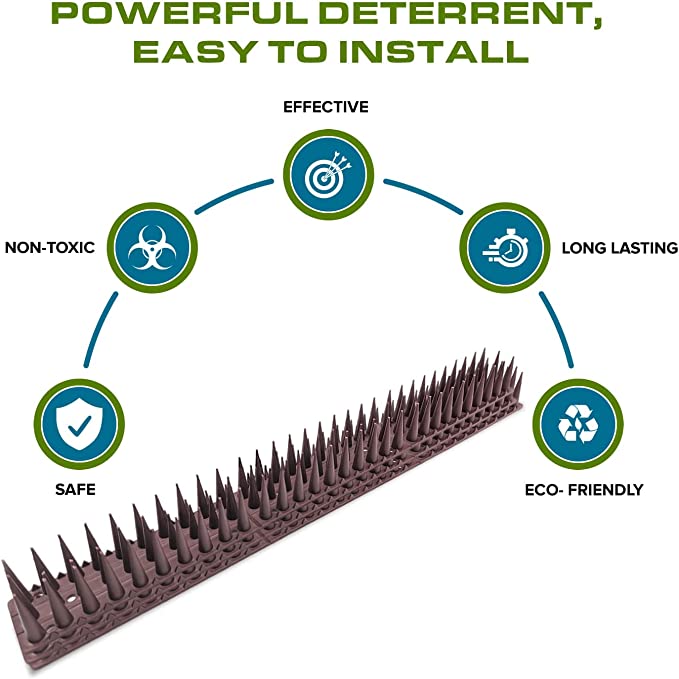
Best practices for Fencing
Here are some of the best practices for fencing:
Colouring the gate in a different colour than the fence
Colouring the gate with a different colour than the fence may allow children to easily understand where they can exit from. This also helps them figure out where parents and guardians can enter by looking for gates that are coloured with a different shade.
This also helps in the case of an emergency.
Choosing premium finishes
High-quality, glossy, vibrant colours are usually used in playground or kindergarten fencing designs to create a fun and welcoming atmosphere.
Painting is not advised because polyester powder coating may lead to chipping or cracking.
Ensuring maximum fence height
To improve perimeter security, people frequently want to raise the height of their boundary walls and fencing. However, in some countries, walls, or fences that are taller than 2 meters require planning permission.
This maximum height restriction also applies to any type of fence or wall topping. So, if a wall or fence already exists and is 2 meters tall, the authorities may ask you to raise its level.
Adding appropriate warning signs
Anti-climb spikes and other safety measures are legal to use in the UK as long as the anti-climb barrier won't create a nuisance and the proper warning is displayed for the people to see.
It's always important to use anti-climb precautions with due consideration of those around you because it may cause harm to the people or animals around you.
